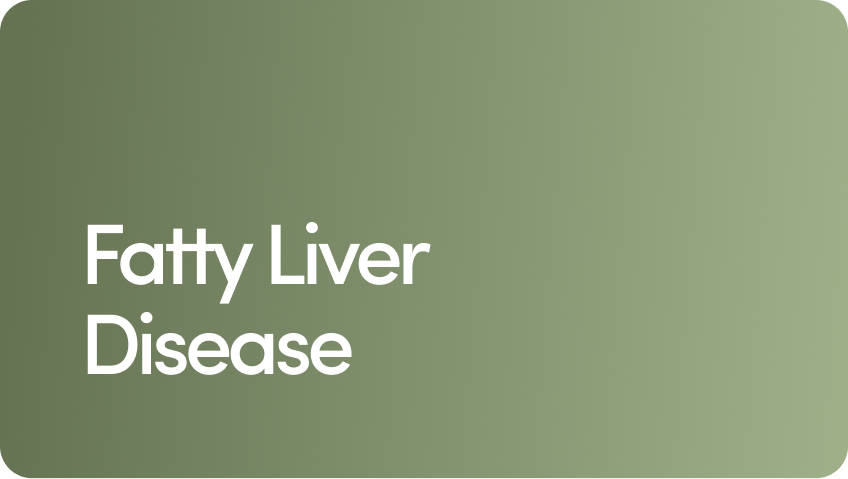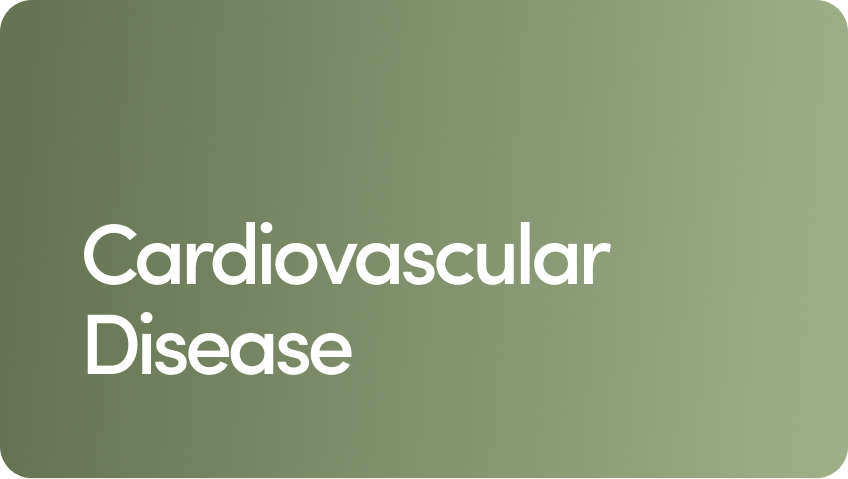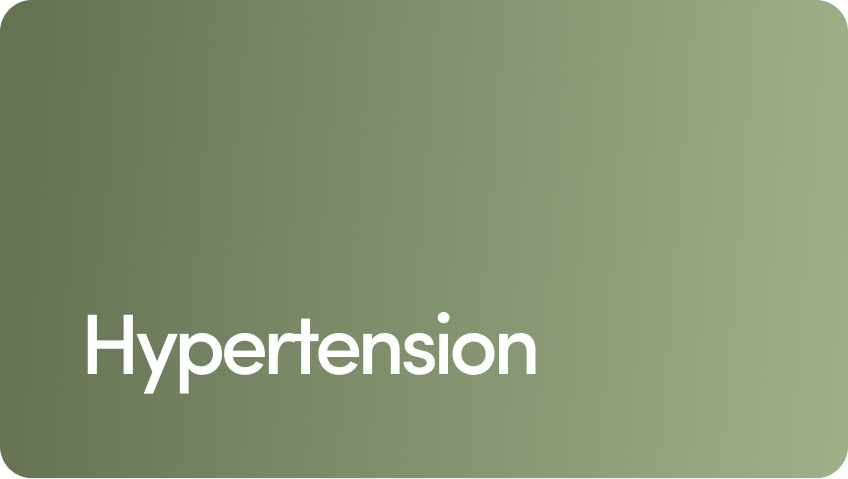Menopause

Menopause is a natural part of life. But because women’s health is still so often underdiscussed and misunderstood, many of us feel totally unprepared for it. We’re here to demystify menopause and help you feel your best during this phase of life.
Overview
What is Menopause?
Menopause is a natural part of life. But because women’s health is still so often underdiscussed and misunderstood, many of us feel totally unprepared for it. We’re here to demystify menopause and help you feel your best during this phase of life.
Menopause isn’t just the end of your period. It’s a major hormonal shift that affects almost every part of your body — from your brain and bones to your sleep, mood, and metabolism.
Menopause and postmenopause aren’t just things to “power through.” Understanding what’s going on with your body and how to manage it can help you minimize symptoms and continue to thrive.
Perimenopause
Before menopause, your body goes through a transition during perimenopause, which lasts between eight and 10 years. During perimenopause, your hormones start to fluctuate, your ovaries slow down, and your cycle can become more irregular.
When does menopause start?
You’ve officially hit menopause when you haven’t had a menstrual period for 12 straight months. This typically happens between 45 and 56.
Reaching menopause before 45 is called early menopause. Premature menopause happens at 40 or younger.
How long does menopause last?
Menopause is a specific point in time after perimenopause. Once you reach menopause, you’re in postmenopause — which lasts for the rest of your life.
Symptoms
Symptoms of Menopause
Menopause hits everyone differently. Some women only have mild symptoms. Others may experience significant physical, mental health, and emotional side effects.
As your estrogen levels drop, your body works to find a new balance, which can trigger a wide range of symptoms.
Here are some of the most common menopause symptoms and how they can affect you:
Vasomotor Symptoms
These symptoms are linked to how your blood vessels expand and contract — and they’re usually the first signs of menopause:
Hot flashes, or sudden waves of heat, usually in your face, neck, or chest
Night sweats, or hot flashes that happen during your sleep (and can mess with your sleep quality)
Chills or cold flushes after a hot flash
Urinary and Sexual Symptoms
Changing hormones can affect your urinary and reproductive systems, leading to symptoms like:
Pain during intercourse (AKA dyspareunia)
Vaginal dryness and irritation
Decreased sex drive
Increased urinary urgency or leakage (urinary incontinence)
More frequent urinary tract infections (UTIs)
Mental and Emotional Changes
Your brain feels the impact of shifting hormones, too. You may notice changes in your thinking and mood during menopause, like:
Mood swings or increased irritability
Anxiety or depression symptoms
Brain fog, forgetfulness, or trouble focusing
Sleep Issues
Falling (and staying) asleep can be a challenge during menopause. These sleep problems might happen on their own or with other symptoms like hot flashes:
Insomnia or trouble falling asleep at night
Frequent wake-ups that break up deep sleep
Daytime sleepiness from restless nights
Physical and Metabolic Shifts
Hormone changes can affect how your body feels, moves, and even looks. Here’s what can happen:
Weight gain, especially around the abdomen (called visceral fat storage)
Thinning hair or hair loss
Dry skin
Achy joints and muscles
Heart palpitations
Read more about menopause weight gain in our guide.
Menstrual Symptoms
Before menopause hits, your menstrual period may shift during perimenopause. Symptoms may include:
Irregular or unpredictable periods
Heavier or lighter menstrual flow
Missed periods
Worsened premenstrual syndrome (PMS)
Causes
Causes of Menopause
Menopause is a natural part of aging. It marks the end of your reproductive years and happens when your ovaries stop producing the hormones estrogen and progesterone, which play a role in fertility and the menstrual cycle.
As these hormone levels start to dip and fluctuate, your periods start to change. During perimenopause, they become irregular, then stop completely. Once you reach menopause, your ovaries have stopped releasing eggs and your estrogen levels don’t go back up.
Risk Factors
Risk Factors for Menopause
Menopause isn’t something you can prevent. All women eventually stop getting their periods. But some factors can influence when menopause starts and how intense your symptoms might be.
Here’s what can play a role:
Age. The biggest predictor of menopause is age. While the average age of menopause is 51, it can happen earlier or later.
Genetics. Your mom’s menopause age can give you an idea of when it might happen for you.
Smoking. Research shows that women who smoke tend to reach menopause earlier than non-smokers.
Cancer treatments. Going through chemotherapy or radiation therapy can damage the ovaries and trigger early or sudden menopause.
Surgical removal of ovaries. Removing both ovaries (AKA a bilateral oophorectomy) causes immediate menopause.
Autoimmune diseases. Conditions like rheumatoid arthritis or thyroid disorders can affect ovarian function and contribute to earlier menopause.
Body mass index (BMI). Estrogen is stored in body fat. Women with lower BMI may have lower estrogen reserves and reach menopause earlier.
Lifestyle habits and stress. Poor diet, lack of exercise, and chronic stress can affect your overall wellness and may worsen menopause symptoms.
While you can’t stop menopause, knowing your personal risk factors can help you feel more in control and better prepared for the transition.
Diagnosis
Diagnosing Menopause
You’re considered to be in menopause when you haven’t had a period in 12 months and there’s no other medical reason for your symptoms.
You don’t need to call your healthcare provider the moment your periods stop. But it’s smart to stay on top of your annual wellness visits and bring up any symptoms or questions you have.
If you’re unsure whether you’re in natural menopause or worried about early menopause signs, schedule a visit with your doctor. They can help you figure out what’s going on, suggest ways to manage symptoms, and talk through treatment options.
Blood tests aren’t necessary to confirm menopause, but they can sometimes help. For example, follicle-stimulating hormone (FSH) tends to rise and estrogen (estradiol) drops during menopause. A thyroid-stimulating hormone (TSH) test can check for thyroid issues like an overactive thyroid, which can mimic menopause symptoms.
Seeing your provider as you reach menopause is also a great time to make a long-term plan for your health and quality of life. From bone density to heart health to emotional well-being, menopause is a great opportunity to check in, get support, and set the stage for healthy aging.
Treatment
Menopause Treatment
Let’s be clear: menopause isn’t a medical condition that needs treating. But the symptoms? Those are real, and they can impact your quality of life.
Thankfully, there are plenty of ways to feel better and lower your risk for things like osteoporosis and heart disease.
Here are some of the potential treatment approaches that can help manage hormone levels and menopause symptoms:
Hormone Replacement Therapy (HRT)
HRT is one of the most effective ways to relieve hot flashes, night sweats, vaginal dryness, and mood swings. It works by replacing the estrogen and progesterone (in the form of progestin) your body no longer makes.
(If you’ve had a hysterectomy to remove your uterus, you’ll likely get an estrogen-only hormone replacement.)
Menopausal hormone therapy comes in different forms — pills, patches, creams, and vaginal rings — and your provider can help you choose what’s best for you.
HRT isn’t right for everyone, but research shows that starting it within 10 years of menopause (or before age 60) may offer more benefits than risks, including lowering your risk of heart disease and even early death. That said, it’s important to talk through the pros and cons with your gynecologist or primary care provider.
Non-Hormonal Treatments
If HRT isn’t right for you, there are other hormone-free options that can help manage menopause symptoms:
Antidepressants. SSRIs or SNRIs can help with mood changes and hot flashes.
Birth control pills. Birth control pills may help balance hormones (and prevent unplanned pregnancy) during perimenopause.
Gabapentin. This antiseizure medication can also help with hot flashes.
Clonidine. This blood pressure medication may help with hot flashes, but comes with risks like low blood pressure.
Fezolinetant. This medication blocks a pathway in your brain that helps manage body temperature. It’s FDA-approved to treat menopause symptoms like hot flashes.
Oxybutynin. This medication treats overactive bladder and can help with hot flashes.
Ospemifene. This selective estrogen receptor modulator helps with painful sexual intercourse due to vaginal thinning.
Vaginal lubricants. These can ease vaginal dryness and discomfort. Opt for ones that are mild and fragrance-free to help prevent irritation.
Lifestyle Changes
How you care for yourself every day is a powerful tool for feeling better during menopause. Here are some lifestyle tweaks to consider:
Move regularly. Exercise can improve mood, sleep, and heart health. It can also prevent muscle mass and bone loss. Whether it’s walking your dog, playing tennis with friends, swimming, or dancing — just get moving. Add in resistance training a couple of times per week to support bone and muscle strength. Need ideas? Check out our guide to how to start working out.
Eat well. Studies show that phytoestrogens, compounds that mimic estrogen in the body, can help reduce vasomotor symptoms like hot flashes during menopause. You can find these compounds in soy foods like tofu and tempeh.
Practice good sleep hygiene. Healthy sleep habits support a healthy mood. Stick to a consistent bedtime routine, avoid stimulants close to bed (like caffeine and screens), and create a sleep-promoting environment.
Incorporate stress management. You can’t avoid every source of stress in life, but you can reduce its negative effects with mind-body practices like yoga, meditation, and nature walks. Still struggling? Cognitive behavioral therapy (CBT) might help.
Complementary and holistic care. Some women find relief through acupuncture or herbal supplements (like black cohosh). Just be sure to check with a healthcare professional before adding supplements to your routine.
Prevention
Menopause Prevention Tips
Remember, you can’t prevent menopause. It’s a natural part of getting older. Instead of fighting it, try to embrace this season of your life.
Small steps now can ease symptoms later and lower your risk for things like osteoporosis, heart disease, and memory issues.
Here’s how to set yourself up for a smoother menopause transition:
Don't smoke. Smoking promotes inflammation and is linked to earlier menopause and more severe symptoms like hot flashes. It also raises your risk of cardiovascular disease. Quitting can help delay menopause onset and protect your overall health.
Maintain a healthy weight. Being over or underweight can throw off your hormones. Aim for a healthy weight with smart nutrition and regular movement. Find evidence-based tips in our guide to how to lose weight during menopause.
Stay physically active. Exercise supports hormone balance, reduces hot flashes, boosts mood, and keeps your bones and heart strong. Mix cardio and strength training for the best results.
Eat for hormone health. A diet rich in fruits, vegetables, protein, whole grains, healthy unsaturated fats (like omega-3s), calcium, vitamin D, and phytoestrogens is naturally high in nutrients. Good nutrition supports your overall wellness and may regulate hormone levels, helping to ease certain menopause symptoms.
Manage your stress. Chronic stress can mess with hormones and increase the risk of mood issues and poor sleep. Try mindfulness, deep breathing, journaling, or talking to a therapist.
Prioritize your sleep. Implementing good sleep hygiene habits now can help you cope with menopause-related sleep issues later on. Aim for 7–9 hours a night. Create a sleep-promoting environment and avoid known sleep disruptors — like caffeine and screens — close to bedtime.
Get regular checkups. Seeing your healthcare provider for routine bloodwork and screenings (like bone density or thyroid tests) can help catch changes early and keep you feeling your best.
Limit your alcohol intake. Excessive drinking can disrupt sleep, increase the risk of breast cancer, worsen hot flashes and mood swings, and promote unintentional weight gain. If you don’t drink, there’s no reason to start.
39 Sources
- Archer DF, et al. (2019). Ospemifene for the treatment of menopausal vaginal dryness, a symptom of the genitourinary syndrome of menopause. https://pubmed.ncbi.nlm.nih.gov/31526199/
- Arnot M, et al. (2021). The relationship between social support, stressful events, and menopause symptoms. https://pubmed.ncbi.nlm.nih.gov/33503073/
- Barnard ND, et al. (2021). The Women's Study for the Alleviation of Vasomotor Symptoms (WAVS): A randomized, controlled trial of a plant-based diet and whole soybeans for postmenopausal women. https://pmc.ncbi.nlm.nih.gov/articles/PMC8462449/
- Calle A, et al. (2024). Severe menopausal symptoms linked to cognitive impairment: An exploratory study. https://pubmed.ncbi.nlm.nih.gov/39137107/
- Christmas M, et al. (2024). Clinical practice guidelines for managing genitourinary symptoms associated with Menopause. https://pubmed.ncbi.nlm.nih.gov/38126460/
- Conde DM, et al. (2021). Menopause and cognitive impairment: A narrative review of current knowledge. https://pmc.ncbi.nlm.nih.gov/articles/PMC8394691/
- Crandall CJ, et al. (2023). Management of menopausal symptoms: A review. https://pubmed.ncbi.nlm.nih.gov/36749328/
- Deecher DC, et al. (2007). Understanding the pathophysiology of vasomotor symptoms (hot flushes and night sweats) that occur in perimenopause, menopause, and postmenopause life stages. https://pubmed.ncbi.nlm.nih.gov/18074100/
- Delamater L, et al (2018). Management of the perimenopause. https://pubmed.ncbi.nlm.nih.gov/29952797/
- de Villiers TJ. (2024). Bone health and menopause: Osteoporosis prevention and treatment. https://pubmed.ncbi.nlm.nih.gov/37230869/
- El Khoudary SR, et al. (2020). Menopause transition and cardiovascular disease risk: Implications for timing of early prevention: A scientific statement from the American Heart Association. https://pubmed.ncbi.nlm.nih.gov/33251828/
- Erdélyi A, et al. (2023). The importance of nutrition in menopause and perimenopause-A review. https://pubmed.ncbi.nlm.nih.gov/38201856/
- Freedman RR. (2014). Menopausal hot flashes: Mechanisms, endocrinology, treatment. https://pubmed.ncbi.nlm.nih.gov/24012626/
- González-Gálvez N, et al. (2024). Resistance training effects on healthy postmenopausal women: A systematic review with meta-analysis. https://pubmed.ncbi.nlm.nih.gov/38353251/
- Grandi G, et al. (2022). Contraception during perimenopause: Practical guidance. https://pmc.ncbi.nlm.nih.gov/articles/PMC9296102/
- Gumussoy S, et al. (2020). The effect of surgical menopause after bilateral oophorectomy on hormonal changes, mucociliary clearance, and quality of life. https://pubmed.ncbi.nlm.nih.gov/32592009/
- Haney AF, et al. (2007). Options for hormone therapy in women who have had a hysterectomy. https://pubmed.ncbi.nlm.nih.gov/17476150/
- He S, et al. (2019). Alcohol and sleep-related problems. https://pubmed.ncbi.nlm.nih.gov/31128400/
- Jenabi E, et al. (2015). The association between hot flushes and smoking in midlife women: A meta-analysis. https://pubmed.ncbi.nlm.nih.gov/26488934/
- Jeon GH. (2024). Insomnia in postmenopausal women: How to approach and treat it?. https://pubmed.ncbi.nlm.nih.gov/38256562/
- Lankila H, et al. (2025). A mediating role of visceral adipose tissue on the association of health behaviours and metabolic inflammation in menopause: A population-based cross-sectional study. https://pubmed.ncbi.nlm.nih.gov/39814903/
- Leach MJ, et al. (2012). Black cohosh (Cimicifuga spp.) for menopausal symptoms. https://pubmed.ncbi.nlm.nih.gov/22972105/
- Lederman S, et al. (2023). Fezolinetant for treatment of moderate-to-severe vasomotor symptoms associated with menopause (SKYLIGHT 1): A phase 3 randomised controlled study. https://pubmed.ncbi.nlm.nih.gov/36924778/
- Leon-Ferre RA, et al. (2019). Oxybutynin vs placebo for hot flashes in women with or without breast cancer: A randomized, double-blind clinical trial (ACCRU SC-1603). https://pubmed.ncbi.nlm.nih.gov/32337497/
- Marjoribanks J, et al. (2017). Long-term hormone therapy for perimenopausal and postmenopausal women. https://pmc.ncbi.nlm.nih.gov/articles/PMC6465148/
- Mehta J, et al. (2021). Risks, benefits, and treatment modalities of menopausal hormone therapy: Current concepts. https://pmc.ncbi.nlm.nih.gov/articles/PMC8034540/
- Molina JR, et al. (2005). Chemotherapy-induced ovarian failure: Manifestations and management. https://pubmed.ncbi.nlm.nih.gov/15853442/
- Peacock K, et al. (2023). Menopause. https://pubmed.ncbi.nlm.nih.gov/29939603/
- Rom O, et al. (2013). Cigarette smoking and inflammation revisited. https://pubmed.ncbi.nlm.nih.gov/23376061/
- Sander B, et al. (2021). Premenstrual mood symptoms in the perimenopause. https://pubmed.ncbi.nlm.nih.gov/34613495/
- Santoro N, et al. (2015). Menopausal symptoms and their management. https://pubmed.ncbi.nlm.nih.gov/26316239/
- Starek-Świechowicz B, et al. (2023). Alcohol and breast cancer. https://pubmed.ncbi.nlm.nih.gov/36310188/
- Stubbs C, et al. (2017). Do SSRIs and SNRIs reduce the frequency and/or severity of hot flashes in menopausal women. https://pubmed.ncbi.nlm.nih.gov/28649145/
- Szegda K, et al. (2017). Adult adiposity and risk of early menopause. https://doi.org/10.1093/humrep/dex304
- Wang R, et al. (2024). Autoimmune thyroid disease and ovarian hypofunction: A review of literature. https://doi.org/10.1186/s13048-024-01451-y
- Whitcomb BW, et al. (2018). Cigarette smoking and risk of early natural menopause. https://pmc.ncbi.nlm.nih.gov/articles/PMC5888979/
- Xu H, et al. (2024). Effects of mind-body exercise on perimenopausal and postmenopausal women: A systematic review and meta-analysis. https://pubmed.ncbi.nlm.nih.gov/38669625/
- Yoon SH, et al. (2020). Gabapentin for the treatment of hot flushes in menopause: A meta-analysis. https://pubmed.ncbi.nlm.nih.gov/32049930/
- Zouboulis CC, et al. (2022). Skin, hair and beyond: The impact of menopause. https://pubmed.ncbi.nlm.nih.gov/35377827/
Editorial Standards
Hims & Hers has strict sourcing guidelines to ensure our content is accurate and current. We rely on peer-reviewed studies, academic research institutions, and medical associations. We strive to use primary sources and refrain from using tertiary references. See a mistake? Let us know at [email protected]!
Related Conditions
 Obesity
Obesity
 Diabetes
Diabetes
 Fatty Liver Disease
Fatty Liver Disease
 Cardiovascular Disease
Cardiovascular Disease
 Hypertension
Hypertension
 Insulin Resistance
Insulin Resistance
*All images feature a model portrayal
(unless otherwise noted).